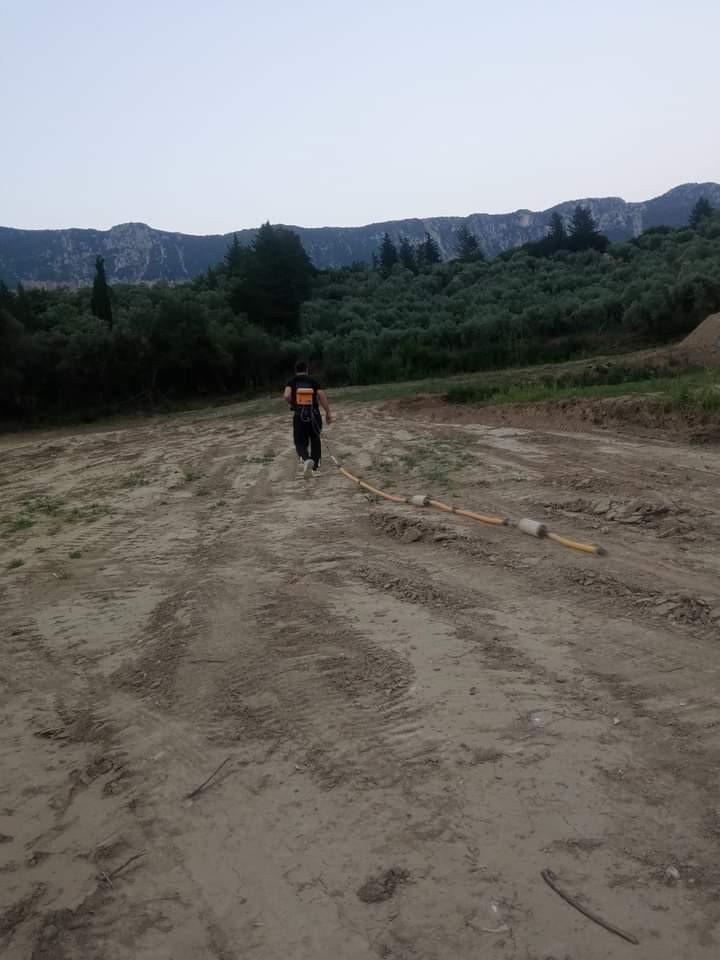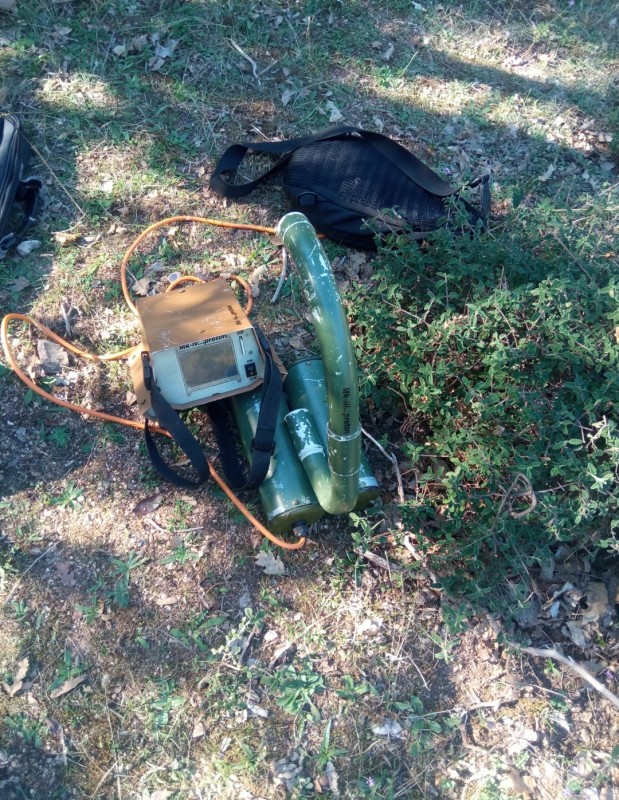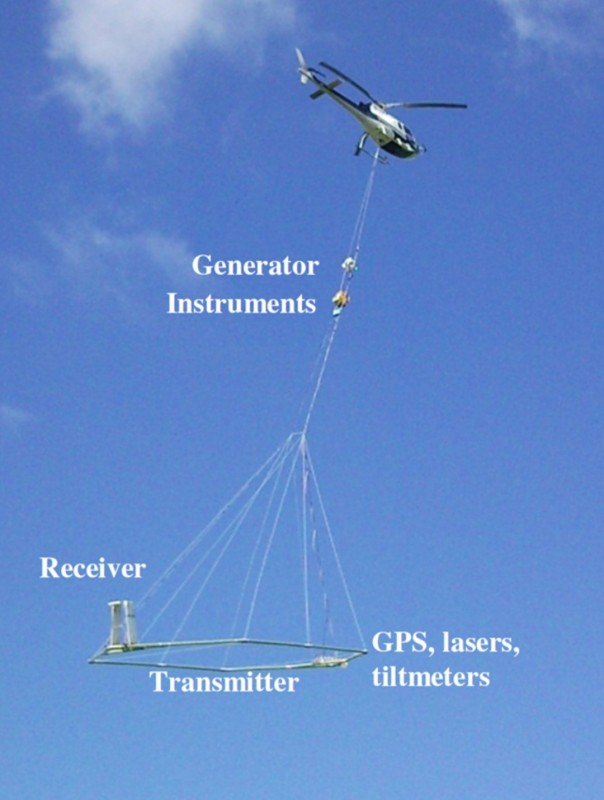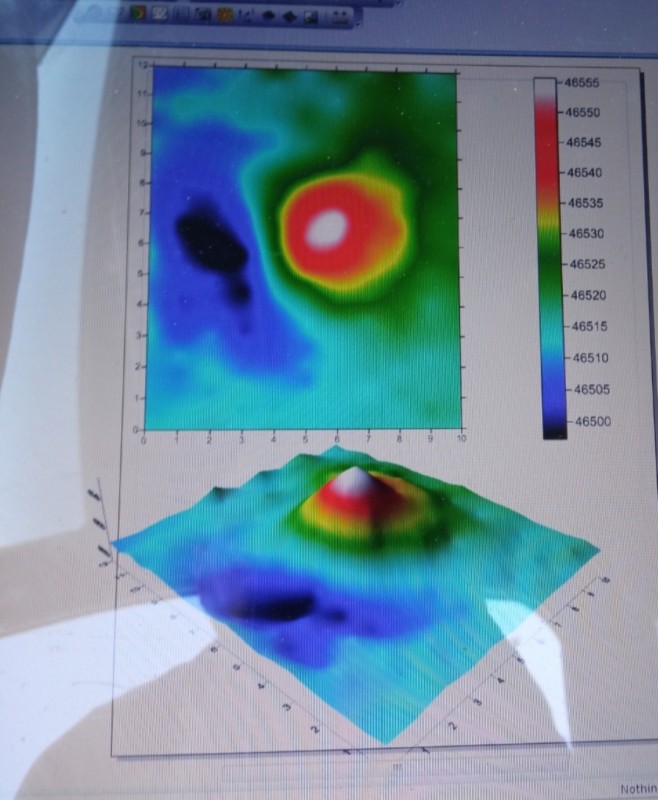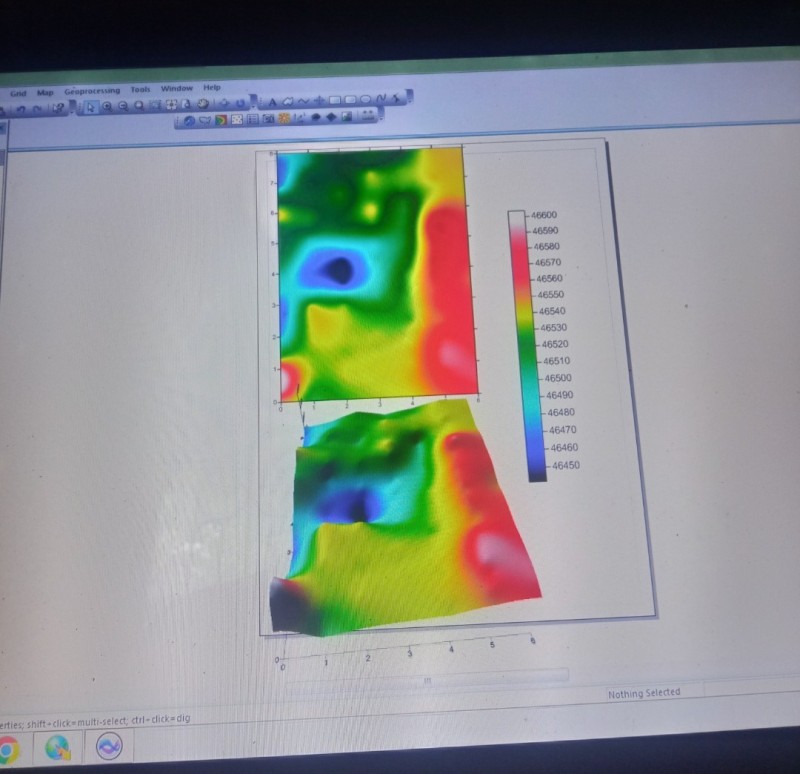-
Posts
111 -
Joined
-
Last visited
Content Type
Forums
Detector Prospector Home
Detector Database
Downloads
Everything posted by Kostas 13
-
Geophysical terrain mapping is no easy task, and certainly not with devices designed to fool the gullible. Unfortunately, most people who do not know these machines, seeing images on the tablet with negative and positive values formed by the malfunction of the machine, think that they are looking at the ground, and this is the biggest trap for the one who does not know how to analyze a file measurement. Proper geophysical surveying requires professional equipment, knowledge and experience and, above all, favorable ground conditions for each class of machinery. personally I use a range of machines to be able to cope as best as possible with different research conditions. My advice is don't throw away your money on geophysical devices aimed at treasure hunters.
-
After twenty years of experience, I can confidently say that the best and most reliable pl pulse detector for finding treasure and relics is the minelab gpx 5000. you won't find another detector with so many combinations of settings for every type of survey that allow you to work in almost all terrains with a huge range of coils and with ground balance that reaches perfection. remember that real depth in a pulse finder is first provided by proper ground balance and in this place Minelab and Garrett are the stars so far.
-
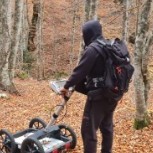
Amount Of Gold Vs Metal Detectors
Kostas 13 replied to Kostas 13's topic in Metal Detector Advice & Comparisons
I have the same opinion as yours. -

Amount Of Gold Vs Metal Detectors
Kostas 13 replied to Kostas 13's topic in Metal Detector Advice & Comparisons
Hi Steve The theory suggested is that Vlf or pi metal detectors cannot detect a large amount of gold for example 20 one kilo gold bars at a depth of one meter in soft ground. I'm mentioning a theory that a friend advocates on a forum we discuss in my country. I disagree with all of you, but it is also very easily explained as it refers to the physical properties of matter Let's take the two main differences of bodies into magnetic and diamagnetic (we leave aside paramagnetic and antiferromagnetic), when they are under the influence of an external magnetic field (eg the one momentarily formed by the detector) In the first we have the formation of Weiss regions with a magnetic moment in the same direction as the intensity of the external magnetic field, due to the motion of orientation of the outer electron shell. In the second, due to the movement of electrons around the nucleus of the atom, the ""production"" of an inductive current. This current is oriented in such a way that the magnetic moment corresponding to it is OPPOSITE to the intensity of the external magnetic field, i.e. the one momentarily formed by the detector. That is, while in magnetic materials the movement of electrons in the outer layer plays a role and there the magnetic field formed inside the body ADDS to that of the detector, in diamagnetic materials the movement of electrons in the outer layer plays no role. as to the orientation of the field, but the motion of the electron around the nucleus plays a role, with the result that the strength of the opposite in terms of the moment of the magnetic field, is SUBTRACTED from the strength of its magnetic probe. In short, the more gold, the higher its resistance. -
There are some who argue that pure gold when in very large quantities is undetectable by metal detectors... please i would like to know if scientifically this theory can be valid. thanks.
-

Garrett Axiom Just Old Technology? I Saw This Posted ....
Kostas 13 replied to Rob Allison's topic in Garrett Metal Detectors
I really enjoy reading your posts that contain knowledge and objectivity. I want you to know that you have earned my respect. -

Giant Coils Looking For Gold From The Sky
Kostas 13 replied to phrunt's topic in Detector Prospector Forum
I'm using a device built a decade ago by a Belgian in collaboration with a Canadian professor, which as far as I know is no longer in production. The txt belongs to a very good friend of mine with whom we collaborate in our research. we usually do small scans like 10*10 because we are interested in ferromagnetic metals and want better resolution. -

Giant Coils Looking For Gold From The Sky
Kostas 13 replied to phrunt's topic in Detector Prospector Forum
sorry for the translation, I'm doing my best🙂 -

Giant Coils Looking For Gold From The Sky
Kostas 13 replied to phrunt's topic in Detector Prospector Forum
After the discussion about geophysical machines started, I got the idea to suggest a method that can help you in your search for natural gold. I personally don't deal with physical gold because I know it doesn't exist where I live but I would love to it existed because I really enjoy this kind of research and envy many of you who do it so let's get to my point... I have read that in soils that contain a magnet like black sand, the chances of native gold are increased, so perhaps using a proton magnetometer would be useful in the soils being surveyed to see what magnetically excites the soil and focus the prospector's research metals in this area ...below I'll put a scan containing magnetic from my main magnetometer so you can see what I'm saying.. -

Giant Coils Looking For Gold From The Sky
Kostas 13 replied to phrunt's topic in Detector Prospector Forum
-

Garrett, Send Me An Axiom And I Will…….
Kostas 13 replied to Reg Wilson's topic in Garrett Metal Detectors
I agree with everything, great post my friend👏👏👏 -

Garrett, Send Me An Axiom And I Will…….
Kostas 13 replied to Reg Wilson's topic in Garrett Metal Detectors
when a company gives you a detector for free, I don't know if you will be able to evaluate it objectively... buy the detector you want to have a free and objective opinion 🙂 -

Nokta Invenio Imaging System
Kostas 13 replied to Steve Herschbach's topic in Nokta / Makro Metal Detectors
I think the price is too much for what it has. -
I don't doubt it especially now that aftermarket coils have come into play 🙂 everything shows that the axiom is a reliable pi in both construction and operation. I always wait enough time when a new machine is released to see reviews in various research situations to make the safest possible conclusions to make the right decision.
-
If Garrett really wants to be competitive, aftermarket coils should be built because they give many alternatives to the conditions the operator will likely encounter while researching.
-

Deep Coins Which Would You Choose Pi Or VLF ?
Kostas 13 replied to IronDigger's topic in Metal Detecting For Coins & Relics
The vlf reads the easy targets well, on the hard ones things change unfortunately and it's very likely that you'll get a coin like iron or it won't detect it so you don't dig it. I personally think that if someone spends a lot of time on a pi machine like the GPX and learns to listen to it with the proper coils, they will hardly bother with vlf detectors again. -

Need Help To Detect Gold Bars 4-6 Feet Deep
Kostas 13 replied to Placer Gold's topic in Metal Detector Advice & Comparisons
the research I am doing is for WWII treasures at great depths... 5-6 feet is not a prohibitive depth and it can detect an object provided the ground is not too conductive and the object will be large enough like for example 40 * 40 . from experience I can recommend you two pulse detectors for this job GPX 5000 with monocoil nf 25 and the German Lorenz Z1 with 2 * 2 frame. The only problem is that you have to be quite experienced with these detectors to understand a deep target. -

Need Help To Detect Gold Bars 4-6 Feet Deep
Kostas 13 replied to Placer Gold's topic in Metal Detector Advice & Comparisons
to reach the depth of six feet has surely opened a large pit where the protonic can see it. -
although I don't deal with gold nuggets, thank you very much for the very nice information you provide us. Hopefully in the future the post will be able to work with a variety of different diameter coils.
-

Need Help To Detect Gold Bars 4-6 Feet Deep
Kostas 13 replied to Placer Gold's topic in Metal Detector Advice & Comparisons
If the place you want to search does not have metal fences and large ferromagnetic metals nearby, the best solution is to use a proton magnetometer that will not detect small metal debris and can see deep inside an iron box. If the treasure is not in an iron box, the proton magnetometer will be able to read the digging done to place the treasure. below I give you two examples.. Iron magnetic target 70 cm at a depth of 3.3 meters. and digging out of an underground structure. -

What Is Your Backup Detector?
Kostas 13 replied to bigtim1973's topic in Metal Detector Advice & Comparisons
My research is more focused on finding British pounds from the 2nd world war, in this research in addition to metal detectors, geophysical machines are also required to locate caves and warehouses used in those years. by no means can I say that I consider any of my machines as a backup, I can say that I have a mixture of machines that cover each other depending on the occasion. The machines I work with are as follows. Ground Penetration Radar 1.MALA GX 160Mhz... 2.MALA CUII RTA 100Mhz. 500-200Mhz... 3. impedance tomography. 4.4 point light 10W... 5. Proton magnetometer. PPM Mark VII...6.Pulse inductive metal detector.7. lorenz deepmax Z1. MINELAB GPX 5000...8.vlf metal detector. DEUS 1.. -
the best settings depend on the type of soil and the external factors that will be present in the area to be investigated... Unfortunately, there are no magic settings that anyone can recommend, but there are settings on the detector that will allow you to work in almost all conditions and get the most out of your detector.

